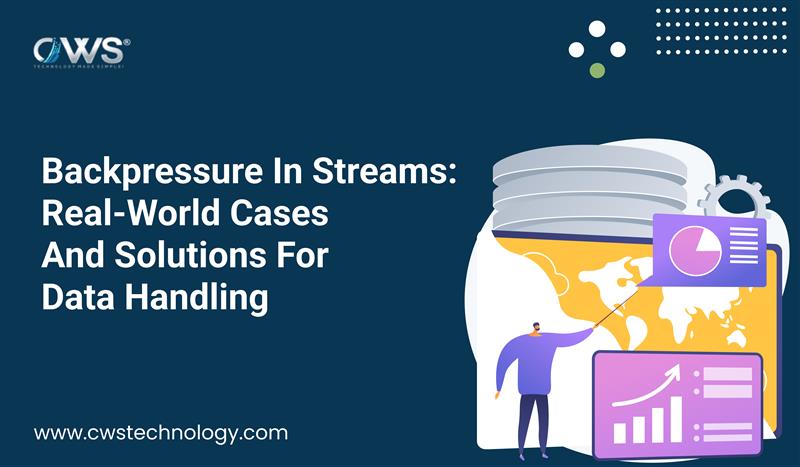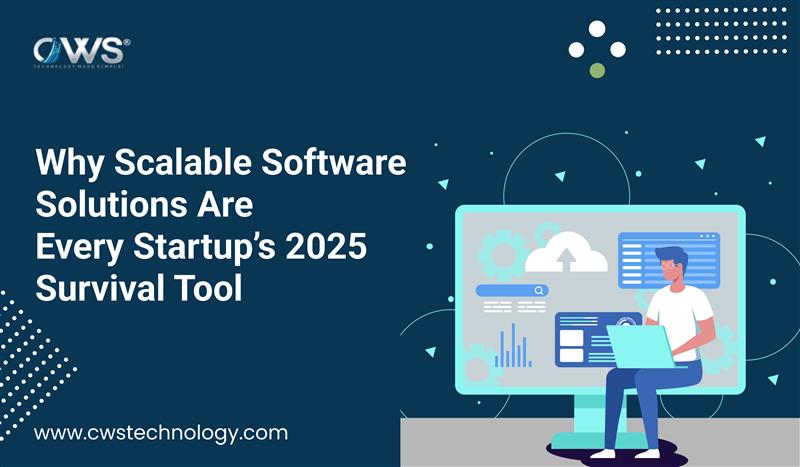Backpressure in Streams is one of the most important yet often misunderstood concepts in modern software engineering. Whether you are working with real-time analytics, building APIs, handling file uploads, or working with IoT data, understanding how streams work—and more importantly, how to handle backpressure—can make or break your system’s performance.
In this blog, we will break down the concept of backpressure in streams, explore real-world cases when data consumers cannot keep up with data producers, and discuss how companies can effectively handle backpressure to build more resilient applications.
What is Backpressure in Streams?
Streams are a way of handling continuous flows of data in chunks rather than waiting for an entire dataset to arrive. Imagine pouring water into a pipe: the producer is pouring the water, while the consumer is draining it out on the other side.
Backpressure occurs when the producer is generating data faster than the consumer can process it.
This imbalance creates a “traffic jam” in the data pipeline. If left unmanaged, it can lead to memory overflows, data loss, increased latency, and even system crashes.
Why Backpressure Matters
In real-world systems, data is rarely generated and consumed at the same rate. A few scenarios make this imbalance critical:
- Network Latency: Data streaming across networks may face bottlenecks due to limited bandwidth.
- Slow Consumers: Consumers (such as databases or APIs) might be slower in processing than producers in generating.
- Large Datasets: Massive files or real-time feeds can overwhelm consumers if not processed in manageable chunks.
- System Scalability: As applications scale, backpressure becomes more frequent and more dangerous if not handled correctly.
For engineers and businesses alike, managing backpressure is not only about performance—it is about ensuring customer experience, service availability, and operational stability.
Real-World Cases of Backpressure in Streams
Let’s look at practical scenarios where backpressure becomes a real issue.
1. Video Streaming Platforms
Think about YouTube or Netflix. When a user watches a video, the producer (video server) streams data chunks. If the network bandwidth is low, the consumer (user’s device) cannot keep up. Without proper backpressure handling, this would result in constant buffering.
Solution: Adaptive bitrate streaming ensures that if backpressure occurs, the stream automatically downgrades to a lower resolution to match the consumer’s processing speed.
2. File Uploads in Web Applications
When a user uploads a large file to a web application, the client (producer) sends data chunks faster than the server (consumer) can process and store them. Without handling backpressure, the server might crash due to memory overload.
Solution: Node.js streams and buffering mechanisms allow servers to pause the producer until the consumer catches up, ensuring stable uploads.
3. IoT Devices and Sensor Data
IoT sensors continuously generate streams of data, sometimes thousands of events per second. If the cloud consumer system cannot handle the flow, critical events could be lost.
Solution: Stream buffering and message queue systems like Kafka or RabbitMQ are used to regulate flow and avoid data loss.
4. Real-Time Analytics
Financial trading platforms rely on real-time analytics where producers send thousands of market events per second. If analytics consumers fail to keep up, opportunities for trading are lost, leading to financial loss.
Solution: Backpressure-aware data pipelines (like Apache Flink or Spark Streaming) can slow producers or temporarily store events until the consumer is ready.
5. API Rate Limits
In microservices, one service might request data too quickly from another. If the consumer service cannot handle the request rate, it may fail or return errors.
Solution: API gateways enforce throttling, limiting request rates and applying backpressure strategies to maintain stability.
How to Handle Backpressure in Streams
Handling backpressure is not about stopping data; it is about controlling and balancing flow. Here are proven strategies:
1. Buffering
Introduce temporary storage to hold data until the consumer is ready. For example, video buffering stores a few seconds ahead to prevent playback issues.
2. Throttling and Debouncing
Regulate the rate of data production. Throttling limits the number of requests within a time frame, while debouncing delays actions until consumers are ready.
3. Flow Control in Node.js
Node.js streams provide built-in mechanisms like pause() and resume() that help manage backpressure by controlling data flow between producer and consumer.
4. Message Queues
Kafka, RabbitMQ, and AWS SQS act as middle layers that absorb data spikes, ensuring consumers can process information at their pace.
5. Load Balancing and Scaling
Distributing consumer workloads across multiple servers can reduce pressure and ensure stability during high-demand situations.
Best Practices for Engineers
- Monitor throughput: Keep an eye on producer and consumer speeds.
- Design for elasticity: Allow consumers to scale horizontally.
- Fail gracefully: Implement retry mechanisms instead of losing data.
- Test under load: Simulate real-world traffic before deployment.
- Adopt resilient architecture: Use event-driven systems to handle unpredictable flows.
Conclusion
Backpressure in Streams is not just a technical term—it’s a critical concept that determines how robust and scalable your system can be. In the real world, consumers rarely process data at the exact speed producers generate it. By acknowledging and managing backpressure, businesses can avoid crashes, improve customer experiences, and maintain reliable data-driven systems.
At CWS Technology, we emphasize building scalable and resilient architectures that anticipate challenges like backpressure. By leveraging proven strategies such as buffering, throttling, and message queuing, organizations can ensure their systems remain stable even under unpredictable workloads.
Managing backpressure is ultimately about balance—ensuring data producers and consumers work in harmony to create seamless, reliable experiences.








